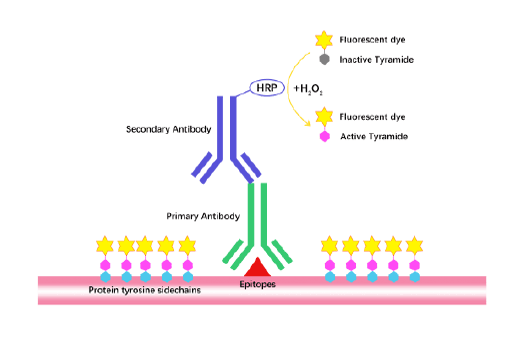Recombinant Rhesus Macaque Tumor Necrosis Factor-alpha/TNFSF2
Tumor necrosis factor alpha (TNF-α), also called cachectin, is the best-know member of the TNF-family, which can cause cell death. This protein is produced by neutrophils, activated lymphocytes, macrophages, NK cells, LAK cells, astrocytes endothelial cells, smooth muscle cells and some transformed cells. TNF-α occurs as a secreted, soluble form and as a membrane-anchored form, both of which are biologically active. The naturally-occurring form of TNF-α is glycosylated, but non-glycosylated recombinant TNF-α has comparable biological activity. The biologically active native form of TNF-α is reportedly a trimer. Rhesus macaque and human TNF-α show approximately 98 % homology at the amino acid level. Two types of receptors for TNF-α have been described and virtually all cell types studied show the presence of one or both of these receptor types.
Reference
1. Davenport C, Kenny H, Ashley DT, et al. 2012. Eur J Clin Invest, 42: 1173-9
2. Cavalcanti YV, Brelaz MC, Neves JK, et al. 2012. Pulm Med, 2012: 745483
3. Sheng WS, Hu S, Ni HT, et al. 2005. J Leukoc Biol, 78: 1233-41
4. Berthold-Losleben MandHimmerich H. 2008. Curr Neuropharmacol, 6: 193-202.
| Gene ID | 715467 |
| Accession # | P48094 |
| Alternate Names | TNFSF2, Cachectin, Differentiation-inducing Factor, DIF, Necrosin, Cytotoxin |
| Source | Escherichia coli. |
| M.Wt | Approximately 17.3 kDa, a single non-glycosylated polypeptide chain containing 157 amino acids. |
| AA Sequence | VRSSSRTPSD KPVAHVVANP QAEGQLQWLN RRANALLANG VELTDNQLVV PSEGLYLIYS QVLFKGQGCP SNHVLLTHTI SRIAVSYQTK VNLLSAIKSP CQRETPEGAE AKPWYEPIYL GGVFQLEKGD RLSAEINLPD YLDFAESGQV YFGIIAL |
| Appearance | Sterile Filtered White lyophilized (freeze-dried) powder. |
| Stability & Storage | Use a manual defrost freezer and avoid repeated freeze-thaw cycles. - 12 months from date of receipt, -20 to -70 °C as supplied. - 1 month, 2 to 8 °C under sterile conditions after reconstitution. - 3 months, -20 to -70 °C under sterile conditions after reconstitution. |
| Formulation | Lyophilized from a 0.2 μm filtered concentrated solution in PBS, pH 7.4, 5 % trehalose. |
| Reconstitution | We recommend that this vial be briefly centrifuged prior to opening to bring the contents to the bottom. Reconstitute in sterile distilled water or aqueous buffer containing 0.1 % BSA to a concentration of 0.1-1.0 mg/mL. Stock solutions should be apportioned into working aliquots and stored at ≤ -20 °C. Further dilutions should be made in appropriate buffered solutions. |
| Biological Activity | Fully biologically active when compared to standard. The ED50 as determined by a cytotoxicity assay using murine L929 cells is less than 0.05 ng/ml, corresponding to a specific activity of > 2.0 × 107 IU/mg in the presence of actinomycin D. |
| Shipping Condition | Gel pack. |
| Handling | Centrifuge the vial prior to opening. |
| Usage | For Research Use Only! Not to be used in humans. |
Quality Control & DataSheet
- View current batch:
-
Purity > 95 % by SDS-PAGE and HPLC analyses.
- Datasheet
Endotoxin: Less than 1 EU/μg of rRhTNF-α as determined by LAL method.








